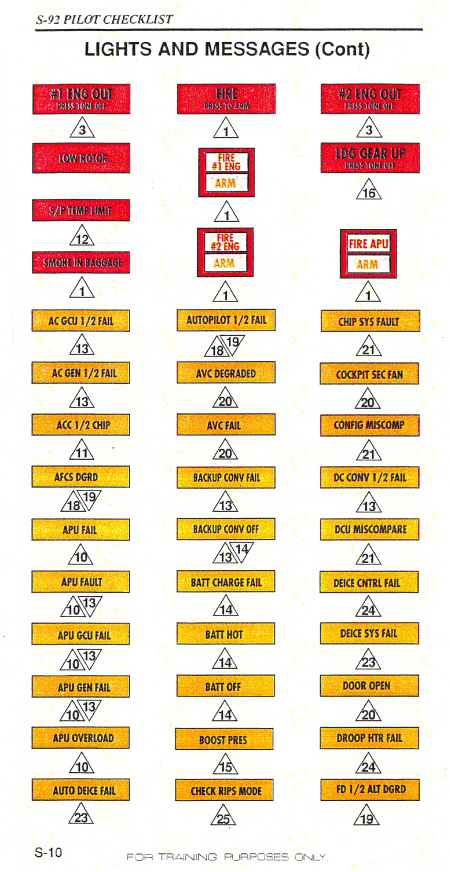
The certification aspects are probably best covered in the 23 month old thread on the accident in Rotorheads.
TSB believed there were clearly CRM and training issues and they really do deserve analysis here. From the TSB
findings section:
- The S-92A rotorcraft flight manual (RFM) MGB oil system failure procedure was ambiguous and lacked clearly defined symptoms of either a massive loss of MGB oil or a single MGB oil pump failure. This ambiguity contributed to the flight crew's misdiagnosis that a faulty oil pump or sensor was the source of the problem.
- The pilots misdiagnosed the emergency due to a lack of understanding of the MGB oil system and an over-reliance on prevalent expectations that a loss of oil would result in an increase in oil temperature. This led the pilots to incorrectly rely on MGB oil temperature as a secondary indication of an impending MGB failure.
- By the time that the crew of CHI91 had established that MGB oil pressure of less than 5 psi warranted a "land immediately" condition, the captain had dismissed ditching in the absence of other compelling indications such as unusual noises or vibrations.
- The captain's decision to carry out pilot flying (PF) duties, as well as several pilot not flying (PNF) duties, resulted in excessive workload levels that delayed checklist completion and prevented the captain from recognizing critical cues available to him.
- The pilots had been taught during initial and recurrent S-92A simulator training that a gearbox failure would be gradual and always preceded by noise and vibration. This likely contributed to the captain's decision to continue towards CYYT.
- Rather than continuing with the descent and ditching as per the RFM, the helicopter was levelled off at 800 feet asl, using a higher power setting and airspeed than required. This likely accelerated the loss of drive to the tail rotor and significantly reduced the probability of a successful, controlled ditching.
- The captain's fixation on reaching shore combined with the first officer's non-assertiveness prevented concerns about CHI91's flight profile from being incorporated into the captain's decision-making process. The lack of recent, modern, crew resource management (CRM) training likely contributed to the communication and decision-making breakdowns which led to the selection of an unsafe flight profile.
Their CRM discussion (including a history of CRM) is extensive:
FACTUAL
Transportation Safety Board of Canada - AVIATION REPORTS - 2009 - A09A0016
and
ANALYSIS
Transportation Safety Board of Canada - AVIATION REPORTS - 2009 - A09A0016
One reason for the delay in understanding the situation is that the Amber MGB Oil P Caution was rapidly replaced by a Red MGB Oil P Warning, which the Co-Pilot tried to find to no avail in the
checklist, because it had also been written assuming only slow leaks and so just listed the Amber.
One thing I find really strange is that the "
Cougar checklist" shown by TSB is marked "Flight Safety Inc" and "For Training Purposes Only". Can anyone explan that?
